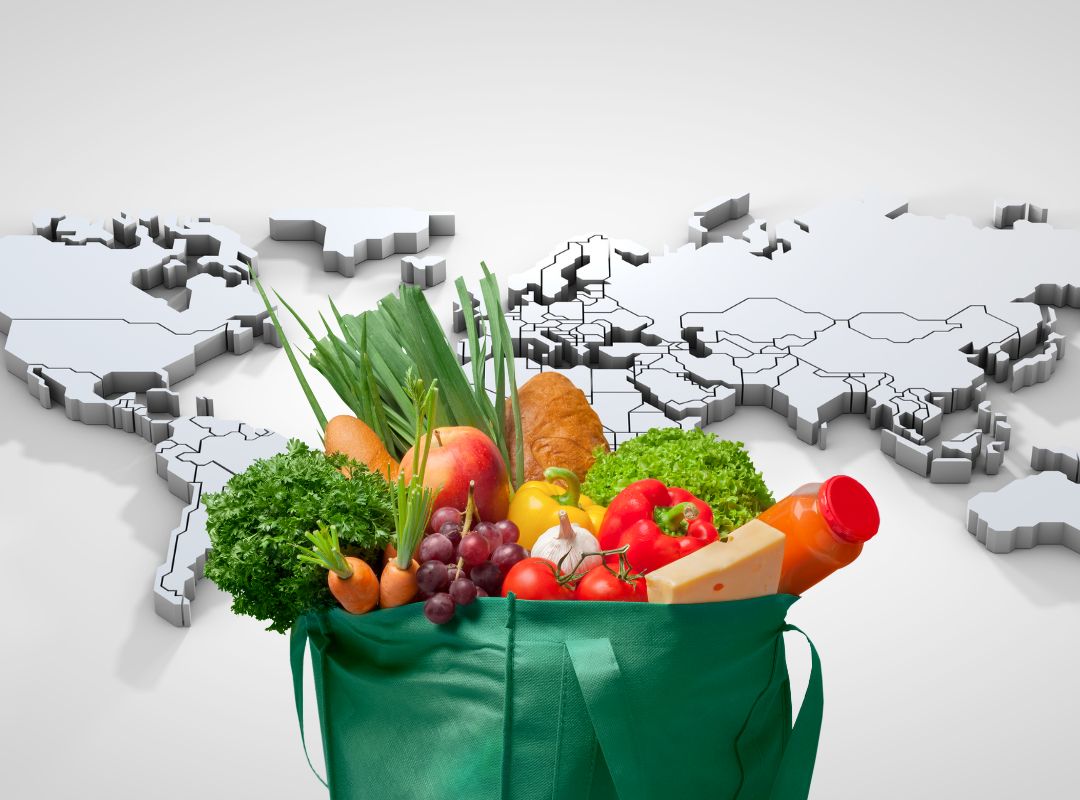Filling the Global Grocery Bag
Students learn what factors affect a country's ability to produce their own food and how food expenses differ throughout the world.

Background
Lesson Activities
Recommended Companion Resources
Credits
Author
Andrea Gardner | National Agriculture in the Classroom Organization (NAITCO)
Sources
- http://www.ers.usda.gov/data-products/food-expenditures.aspx#26636
- http://www.one.org/us/2014/11/12/14-surprising-stats-about-global-food-consumption/
Standards
National Content Area Standards
- Career & Technical Education
- AFNR (Grades 9-12): Natural Resource Systems Career Pathway
- NRS.01.01: Apply methods of classification to examine natural resource availability and ecosystem function in a particular region.
- NRS.02.02: Assess the impact of human activities on the availability of natural resources.
- NRS.02.04: Examine and explain how economics affects the use of natural resources.
- AFNR (Grades 9-12): Natural Resource Systems Career Pathway
- Social Studies – Economics
- Economics Standard 1 (Grades 9-12): Scarcity
- Objective (Grades 9-12): Identify what they gain and what they give up when they make choices.
- Economics Standard 3 (Grades 9-12): Allocation
- Objective (Grades 9-12): Evaluate different methods of allocating goods and services, by comparing the benefits to the costs of each method.
- Economics Standard 9 (Grades 9-12): Competition and Market Structure
- Objective (Grades 9-12): Explain how changes in the level of competition in different markets can affect price and output levels.
- Economics Standard 1 (Grades 9-12): Scarcity
- Social Studies – Geography
- APHG Topic 5.9: The Global System of Agriculture
- PSO-5.E.1: Food and other agricultural products are part of a global supply chain.
- APHG Topic 5.9: The Global System of Agriculture
- Social Studies – History
- NCSS 7 (Grades 9-12): Production, Distribution, and Consumption
- Objective 1: Scarcity and the uneven distribution of resources result in economic decisions and foster consequences that may support cooperation or conflict.
- Objective 4: Entrepreneurial decisions are influenced by factors such as supply and demand, government regulatory policy, and the economic climate.
- Objective 6: How factors such as changes in the market, levels of competition, and the rate of employment cause changes in prices of goods and services.
- Objective 9: Various measures of national economic health (e.g., GNP, GDP, and the unemployment rate).
- NCSS 9 (Grades 9-12): Global Connections
- Objective 1: Global connections are rapidly accelerating across cultures and nations and can have both positive and negative effects on nations and individuals.
- Objective 2: The solutions to global issues may involve individual decisions and actions, but also require national and international approaches (e.g., agreements, negotiations, policies, or laws).
- Objective 5: The causes and consequences of various types of global connections.
- NCSS 3 (Grades 9-12): People, Places, and Environments
- Objective 1: The theme of people, places, and environments involves the study of the relationships between human populations in different locations and regional and global geographic phenomena, such as landforms, soils, climate, vegetation, and natural resources.
- Objective 3: Consequences of changes in regional and global physical systems, such as seasons, climate, and weather, and the water cycle.
- Objective 4: The causes and impact of resource management, as reflected in land use, settlement patterns, and ecosystem changes.
- NCSS 7 (Grades 9-12): Production, Distribution, and Consumption
